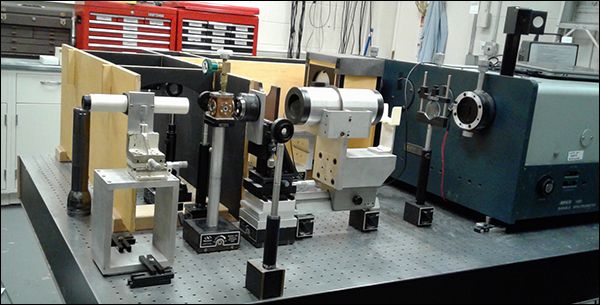Description
Raman spectroscopy uses the inelastic scattering of monochromatic light to probe molecular structure. In Raman scattering, the frequency of the scattered light is shifted from the frequency of the incident beam. The rotational and vibrational energy levels of the molecule in question determine the magnitude of the frequency shift. In this experiment, you will use a high powered laser scattered off of a gaseous sample to find the rotational constants of the molecules.

Raman spectrum experiment equipment.
References
Greytak, T. "Indistinguishable Particle Effects in Rotational Raman Scattering (PDF)." MIT course 8.044 Statistical Physics I on MIT OpenCourseWare.
Zhou, H. and F. Machado, "Raman Spectroscopy on Diatomic Molecules (PDF)." Junior Lab Exploratory Project Proposal 2015.
Ferraro, J., K. Nakamoto, and C. Brown, Introductory Raman Spectroscopy. Amsterdam: Academic Press, 2002. ISBN: 9780122541056.
Weber, A. Raman Spectroscopy of Gases and Liquids (Topics in Current Physics). Berlin: Springer-Verlag, 1979.
Edwards, D. F. and C. Y. She, "Laser Excited Raman Spectroscopy." American Journal of Physics 40 (1972): 1389-1399.
